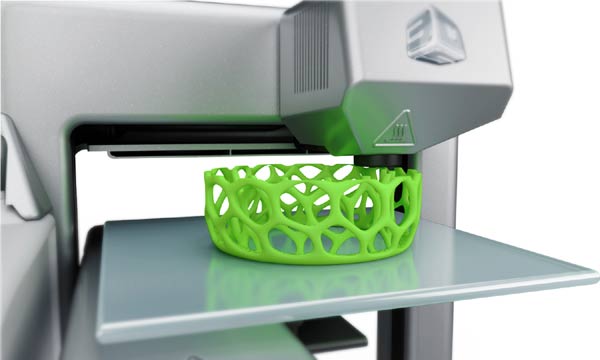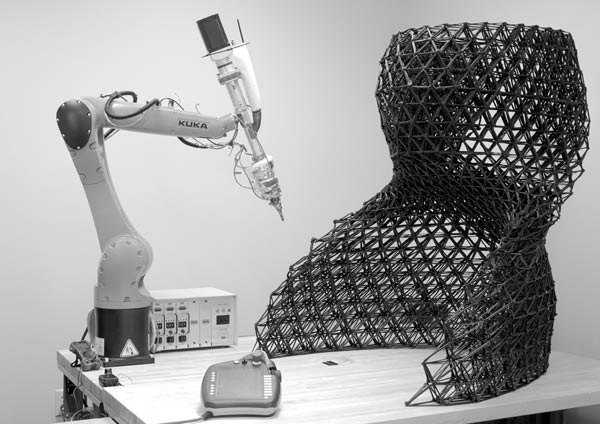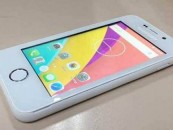Robots are useful in that they help us carry out complex tasks especially those that can be programmed. However, if not controlled they can be hazardous to themselves and also to humans. They are also expensive to repair once they break down, which can be due to wrong landing. MIT’s Computer Science and Artificial Intelligence Laboratory researchers came up with a solution to combat this problem. They combined efforts in programming customized soft materials through 3-D printing. This technique leads to nimbler, safer and more durable robots.
The New Technology demonstration
The team used cube-shaped robots to demonstrate their discovery. They include two motors, a rigid body, inertial measurement unit sensors and a microcontroller. It is propelled by four layers of a looped metal strip that serve as the spring. As lastly seen, autonomous cube robots from CSAIL has silicon shell from a plate that makes them be bouncy. Being bouncy is important especially for cube bot designated to move along the ground. However, for those carrying breakable things such as cameras or sensors, being bouncy can be a problem.
New research has brought to hand more precise shell that is less bouncy. It uses customized shock absorber skins. The technique allows the cube robots to bounce four times more precisely. The process used allows you to have a robot that can help you tackle complex work. However, Fuse Crunch, are concerned about how embracing of these robots can lead to unemployment on their news on emerging tech news.
Design
The new device is designed with three materials combined in portions that are a solid, liquid and a TangoBlack+ which is a rubbery substance. The new exterior of these new devices has been 3-D printed with these materials. This combination of materials in different portions enables the devices to be designed with more or less bouncy properties depending on the desired application. The team has come up with effective dampers, which can be tailored by controlling the liquid and solid level for them to fit exactly to the application. According to statics varying levels of liquid concentration changes the elasticity of collision; those with less liquid percentage are less bouncy than those with a high percentage.
3-D Printing

This is a technique that allows you to program material according to your needs for every single part of an object. It enables more possibilities of customizing a soft object using the existing fabrication methods. CSAIL team used a standard 3-D printer to print both robot cubes and the skins with the three materials; a solid, a liquid and a TangoBlack+.
Programmable Viscoelastic Material (PVM)
PVM is a technique designed by the team to allow users to program the robot according to the task at hand. With this, you can digitally program every part of a 3-D-printed object to exact levels of elasticity and stiffness you desire depending on the robot application. The team combined standard print materials with a non-curing liquid. The viscoelastic materials are damper materials such as rubber and plastic, that has both liquid and solid qualities. They are easy to find, compact and cheap. However, they are time-consuming when it comes to customizing them. This is why they are only commercially available at specific damping levels and in specific sizes. PVMs make it easy to control the robots and are able to protect the sensitive parts such the sensors and the camera.
How it Works?

The customized shock absorbers prevent the robot from breaking and protect the delicate components such as cameras and sensors from the destruction. The demonstration showed that the cube robots with shock absorbers transfer less than half the energy that would be previously transferred to the ground. The shock absorbing skin outfitted in this robots use only 1/250 amount of energy it transfers to the ground. This prevents a sensor from cracking upon hitting the floor or a rotor from breaking off from a drone. According to the CSAIL director, the materials allow you to 3-D print robots with viscoelastic properties. During the print time, you can input these properties as part of the fabrication process.
Advantages
- The shock absorbers prevent the robot from breaking.
- The new technology saves you from making many parts that vary in absorbability which
have to be assembled together. - The robots are safer.
- They are more durable.
- They are also nimbler; quick and light in movement.
Application
This technique of using the shock absorbers can be used to extend the lifespan of other electronics such as phones and delivery drones and also sporting equipment such as helmets and shoes.
You may also like: How 3d-Printed Finger Can Be Used To Solve A Murder Mystery?
Conclusion
MIT’s MIT Computer science and artificial intelligence laboratory’s new technology have lessened the risks of mishaps that come with the robots by the 3D printing of lightweight, customized shock absorbers. The technology aims at reducing the landing force of the robot thus lessening their destruction. This makes it less dangerous for the robot to crash into something. The technology increases the chances of robots taking up the roles in the world since they are safer and more durable.






No Comments so far
Jump into a conversationNo Comments Yet!
You can be the one to start a conversation.